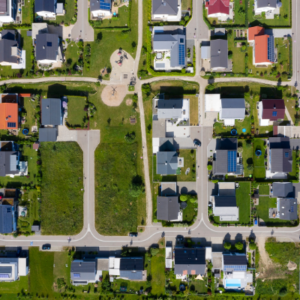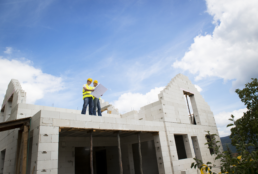How Do House and Land Packages Work: The Complete Guide
Searching for an existing home that checks all your boxes and is in your ideal location can be a time-consuming process. House and Land Packages could be the path to your dream home. There is nothing like opening the door and walking into a brand new home with characteristics you have chosen to suit your preferences and lifestyle. The process of building your ideal home is not as convoluted as you may think. Therefore, in this complete guide, we will break down the question everyone is asking: How Do House and Land Packages Work?
What is a House and Land Package?
House and land packages are the processes of purchasing a block of land from a developer and selecting from a range of home designs. Essentially, this combines the land and new home construction purchase into a single price. These packages have seen a rise in popularity in Australia since buyers can know the combined price of their home and land from the outset. The process begins with a property developer who acquires land, lays down the infrastructure (roads, water, sewage), then offer customisable home designs to build a new home.
What are The Pros and Cons of House and Land Packages?
| PROS | CONS |
| The flexibility of design and inclusions allows you to customise it to meet your lifestyle and your needs. | Hidden ‘costs’ in a house and land package is the developer’s profit margin and a proportion of the marketing costs involved in selling this type of property. Therefore, final prices may be inflated. |
| You will only need to deal with one person. Therefore, simplifying the process of building a custom home. This is because you do not need to look for a block of land first and subsequently find the right builder. | Inclusions are basic. Usually, there will be options to upgrade the inclusions however there will undoubtedly be additional costs. |
| The builder is familiar with the development. They will know what custom home will suit them best. | Compromised location. You are likely to find that you are limited in the locations you can purchase house and land packages. The majority of these packages are situated further from the city, where there is an abundance of land. |
| Stamp duty savings. These packages typically only make you pay stamp duty on the land component, which could be saving you thousands. | The land value of a newly built home could be less than a brand new property. Although a shiny new home that meets all your needs is attractive, a 35-year old property in a competitive location may make a far better investment in the long run. |
| Low maintenance cost. Moving in to a newly built home means that you can put off paying for structural maintenance for a few years. | Moving in to a new home in a house and land package takes much longer than buying an existing home. On top of the construction process, it is inevitable that your build may be delayed by weather or unforeseen complications |
How Does Financing Work for House and Land Packages?
A significant difference between purchasing a House and Land package and an existing house comes down to how they are financed. When purchasing a home you are only required to take out one mortgage loan. However, with house and land packages you will need to take out two loans that are usually bundled together to form one fixed price. These two loans consist of a regular mortgage on the land and a loan for the construction of the house.
Repayments of the land mortgage begin once settlement and title of the land have passed. Importantly, if you are a first home buyer, make sure you check your eligibility for a First Home Owners Grant.
The construction loan is paid in increments as stages are completed. As a result, lenders typically charge interest only on the repayments that have been paid to date. This process usually consists of five to six stages.

Step-by-step Guide to Buying a House and Land Package
- Do your research. Look for property developers in your area of interest.
- Go to inspections. Once you have settled on a property developer, head to display homes on the estate to inspect them and get an idea of a likely result.
- Organise your finance. Seek pre-approval of your home loan.
- Peruse your chosen property developer’s home designs and any variable features and additions.
- Choose a parcel of land on the estate.
- Ensure you’re well aware of what is included in your house and land package (i.e., light fittings, floor coverings, landscaping, driveway).
- Sort out the final approval of your home loan.
- Settle on an agreed amount to pay for each stage of the build.
- Execute contracts with the developer. Note: Contact a solicitor to have the contract perused.
- Monitor the build. Visit the site throughout the construction phase to inspect the progress and identify any glaring problems.
- Release progress payments via your lender as the construction proceeds, when you are satisfied with the completion of each stage.
- Before releasing the final payment conduct a detailed inspection of the final project.
- Turn the key and move in!
Key Takeaways
Ultimately, your decision to choose a house and land package come down to your current and individual needs. Indeed, if you are willing to wait a period and pay a little more for customisation and a simplified process, then a house and land package may be suitable. As a rule, you should ensure you are pre-approved for a loan before you commit to a house and land package. This will reduce the likelihood of forfeiting your deposit. By following our complete guide on how house and land packages work, you are sure to be well-prepared for your next big move.
PiPr is home to builders and property developers alike. See what we offer here. Or better yet, watch a demo!

